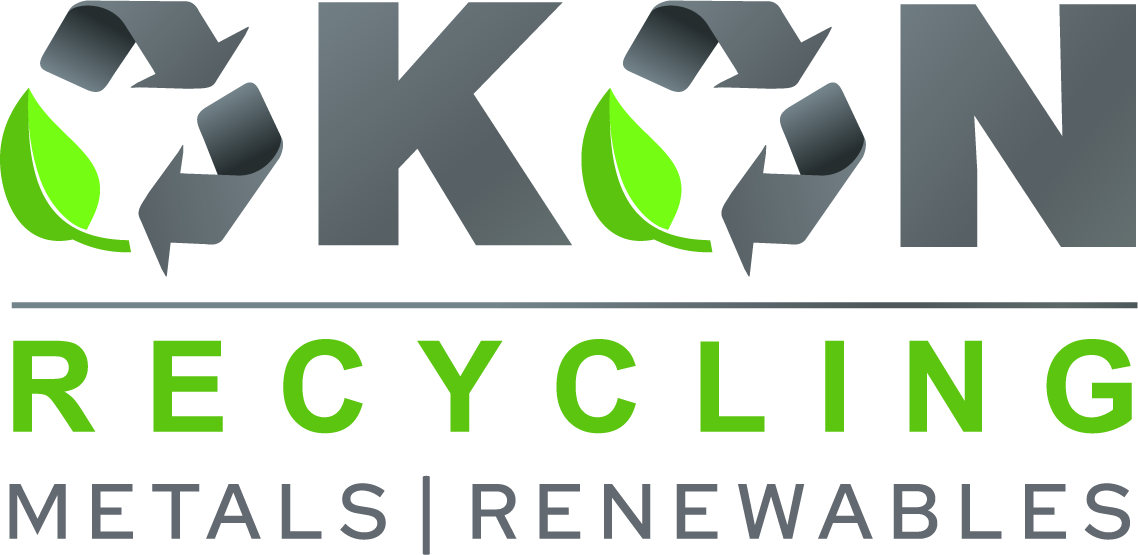5901 Botham Jean Blvd, Dallas, TX 75215
Containers for Heavy Metal Recycling: Importance and Safety
March 25, 2025Improperly managed heavy metal waste can contaminate soil and water resources for generations. This reality highlights the critical importance of proper containers for heavy metal recycling. In exploring specialized waste management, we’ll see how these containers protect our environment, safeguard human health, and streamline recycling processes.
Heavy metals, known for their toxicity and persistence, require careful attention in disposal and recycling. From lead-acid batteries to electronic waste with cadmium and mercury, proper containment is not just compliance – it’s crucial for preserving our planet’s health.
This guide will explore the types of containers designed for heavy metal recycling, their importance in environmental protection, and best practices for safety and efficiency. Whether you’re a facility manager, an environmental professional, or someone passionate about responsible waste management, this article will provide the knowledge to navigate heavy metal recycling containers.
Safety Features of Heavy Metal Recycling Containers
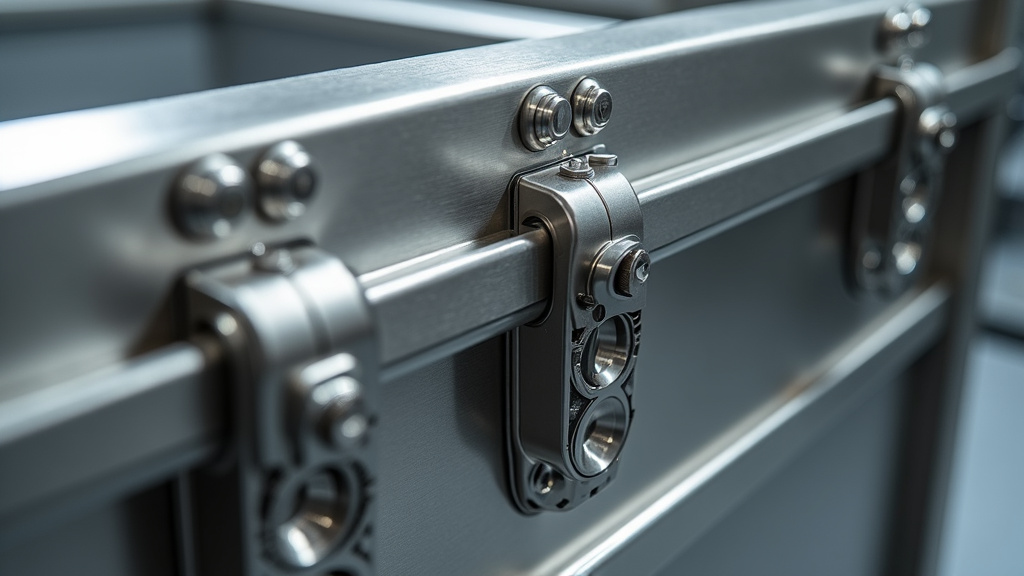
Ensuring safety is crucial when recycling heavy metals. Proper containment protects workers and prevents environmental contamination. Let’s examine the key safety features that make heavy metal recycling containers both effective and regulation-compliant.
Leak-Proof Seals: The First Line of Defense
Leak-proof seals are vital for securely containing hazardous materials. They prevent liquid or particulate matter from escaping, even if the container is tipped or jostled during transport. Justrite Safety Cans and Containers highlight the importance of leakproof construction in hazardous-waste containers for safe disposal.
High-quality seals are usually made from durable materials like PTFE or specialized rubber compounds, which resist chemical degradation and maintain integrity over time. Proper seal maintenance, including regular inspections and replacements when needed, is essential.
To ensure maximum effectiveness, containers should be periodically tested for leaks through pressure testing or visual inspections under controlled conditions. Even a small leak can lead to significant environmental damage or worker exposure over time.
Corrosion Resistance: Built to Last
Heavy metals and their byproducts can be highly corrosive, making corrosion resistance a critical feature for recycling containers. Materials like high-density polyethylene (HDPE), polypropylene, or specially coated metals are commonly used for their excellent resistance to chemical attack.
Corrosion-resistant containers not only prevent leaks but also extend the container’s lifespan, reducing replacement frequency and cutting down on long-term costs and environmental impact. Regular inspections for signs of corrosion, especially in high-stress areas like seams and closures, are essential.
Different heavy metals may require specific container materials. For instance, some metals might react with certain plastics, necessitating lined metal containers instead. Always consult material compatibility charts when selecting containers for specific waste streams.
Proper Labeling: Clear Communication is Key
Clear, accurate, and durable labeling is more than a regulatory requirement – it’s a crucial safety feature. Labels should clearly identify the contents, associated hazards, and handling instructions, vital information for workers, emergency responders, and downstream handlers in the recycling process.
Labels must resist fading, tearing, and chemical exposure. Many facilities use a combination of pre-printed labels and on-demand printing systems to ensure information is current. Include accumulation start dates and generator information as required by regulations.
Consider using color-coding or symbols in addition to text labels for quick visual cues about container contents, even from a distance. Ensure any color-coding system is consistently applied and understood by all personnel.
Additional Safety Features to Consider
While leak-proof seals, corrosion resistance, and proper labeling form the foundation of safe heavy metal recycling containers, several other features can enhance safety:
- Secure closures: Locking mechanisms or tamper-evident seals can prevent unauthorized access or accidental opening.
- Ergonomic design: Features like handles, wheels, or stackability can reduce the risk of injury during handling.
- Compatibility with handling equipment: Ensure containers can be safely moved with forklifts or other material handling devices.
- Secondary containment: For extra protection, consider using containers with built-in secondary containment or placing them in spill pallets.
- Fire resistance: In areas where fire is a concern, containers with fire-resistant properties may be necessary.
Remember, the specific safety features needed may vary depending on the types of heavy metals being recycled, local regulations, and your facility’s unique requirements. Regular training for personnel on proper container use and handling is essential to maximize the effectiveness of these safety features.
By prioritizing these safety features in your heavy metal recycling containers, you’re not just complying with regulations – you’re creating a safer workplace and protecting the environment. Keep these features in mind when assessing your current containers or selecting new ones for your recycling operations.
No table output available
Regulatory Compliance for Heavy Metal Recycling Containers
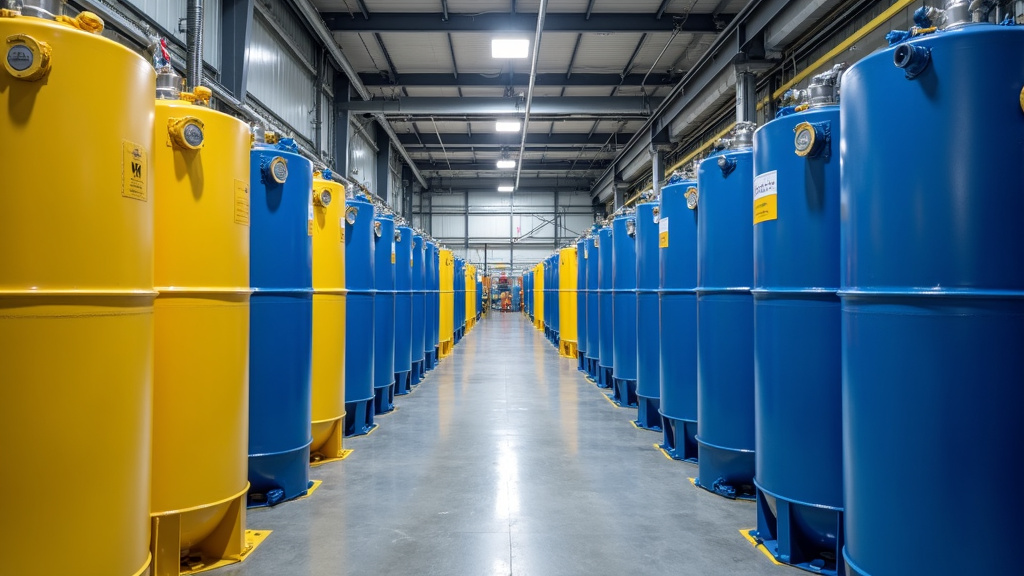
When recycling heavy metals, safety and compliance are essential. The containers used must meet stringent regulations set by the Environmental Protection Agency (EPA) and the Department of Transportation (DOT). These guidelines ensure the proper handling, storage, and transportation of potentially hazardous materials.
The EPA, under the Resource Conservation and Recovery Act (RCRA), sets fundamental requirements for managing hazardous waste. According to EPA archives, metal recovery is classified as recycling under current RCRA Subtitle C regulation. This classification significantly impacts the management of heavy metal recycling containers.
Meanwhile, the DOT’s Hazardous Materials Regulations (HMR) ensure safe transportation. Found in 49 CFR Parts 171-180, these regulations specify requirements for packaging, labeling, and transporting hazardous materials, including recycled heavy metals.
Key EPA Regulations for Heavy Metal Recycling Containers
EPA regulations focus on preventing environmental contamination and protecting human health. For heavy metal recycling containers, this involves:
- Proper identification and labeling of hazardous materials
- Use of compatible containers
- Regular inspections to ensure container integrity
- Implementation of spill prevention and control measures
- Adherence to specific storage time limits for hazardous waste
Some recycled heavy metals may be exempt from certain hazardous waste regulations if they meet specific criteria, but proper containment and handling remain necessary.
DOT Regulations for Transporting Heavy Metal Recycling Containers
DOT regulations are crucial for moving heavy metal recycling containers. According to the Federal Motor Carrier Safety Administration, key requirements include:
- Use of DOT-approved containers meeting specific performance standards
- Proper marking and labeling with hazard class and identification numbers
- Accurate completion of shipping papers detailing hazardous materials
- Adequate training for all employees involved
- Security plans for certain high-risk hazardous materials
DOT regulations classify hazardous materials into nine classes, with heavy metals potentially falling into several categories depending on their properties and forms.
Impact on Container Selection and Use
Understanding these regulations is crucial when selecting and using containers for heavy metal recycling. The choice of container must consider factors such as:
- The type and characteristics of the heavy metals being recycled
- The container’s compatibility with the materials
- The intended method of transportation
- The duration of storage before processing
- Potential exposure to extreme temperatures or environmental factors
For example, a container suitable for recycled lead batteries might not be appropriate for mercury-containing devices. Each type of heavy metal may require specific containment strategies to ensure compliance and safety.
In summary, understanding the regulatory landscape for heavy metal recycling containers requires knowledge of both EPA and DOT regulations. Compliance with these guidelines protects workers, the public, and the environment while efficiently managing valuable metal resources. As regulations evolve, staying informed and adaptable is key to maintaining a compliant and successful recycling operation.
Best Practices for Using Heavy Metal Recycling Containers
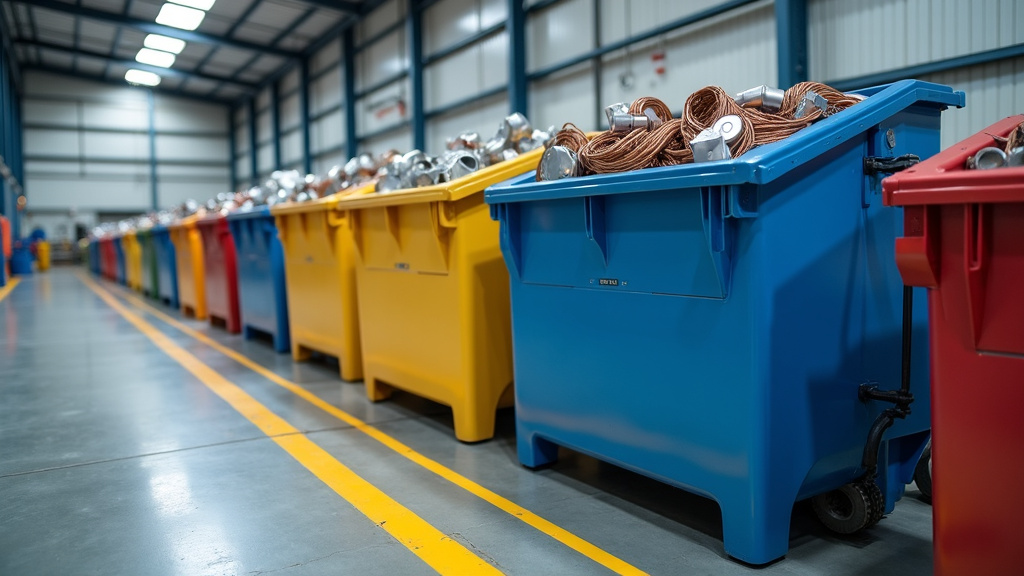
Proper use of heavy metal recycling containers is crucial for maximizing efficiency and minimizing environmental risks. By following these best practices, you’ll contribute to a more sustainable recycling process and help conserve valuable resources. Here are the essential steps for optimal container use.
1. Correct Sorting: The Foundation of Effective Recycling
Sorting is the cornerstone of successful metal recycling. Proper separation ensures that each type of metal can be processed efficiently, maximizing its value and recyclability.
Start by familiarizing yourself with the different types of metals. Use a magnet to distinguish between ferrous (magnetic) and non-ferrous (non-magnetic) metals.
Separate your scrap into categories such as aluminum, copper, brass, and steel. This initial sorting greatly enhances recycling efficiency.
2. Regular Maintenance: Keeping Containers in Top Shape
Maintaining your recycling containers is vital for both safety and efficiency. Regular upkeep ensures that the containers remain functional and hygienic.
Inspect containers frequently for damage, such as cracks or loose parts. Promptly repair or replace damaged containers to prevent potential hazards.
Clean the containers regularly to avoid residue build-up that could contaminate recycled materials. This practice also helps prevent unpleasant odors and pest infestations.
3. Adhering to Capacity Limits: Preventing Overflows and Accidents
Respecting the capacity limits of your recycling containers is crucial for safety and efficient collection. Overfilled containers can lead to spills and potential injuries.
Be aware of the weight limits for different types of containers. Heavy metals can quickly exceed these limits, so distribute the weight evenly.
If your containers consistently reach capacity too quickly, consider increasing collection frequency or acquiring additional containers.
4. Proper Labeling: Enhancing Sorting Accuracy
Clear and accurate labeling of recycling containers significantly improves sorting efficiency. It helps both employees and recycling handlers identify contents quickly.
Use large, easy-to-read labels indicating which types of metals should be placed in each container. Consider using color-coding for quick visual identification.
Include any specific instructions or warnings on the labels, such as ‘No Hazardous Materials’ or ‘Clean Metals Only’.
5. Training and Education: Empowering Your Team
Educating everyone involved in the recycling process is key to maintaining best practices. Proper training ensures that all team members understand the importance of correct container usage.
Conduct regular training sessions on metal identification, proper sorting techniques, and safe handling procedures. This knowledge empowers your team to make informed decisions.
Consider creating easy-to-follow guides or posters near recycling areas as constant reminders of best practices.
By implementing these best practices for using heavy metal recycling containers, you’ll not only enhance the efficiency of your recycling efforts but also contribute to a more sustainable future. Remember, every piece of properly recycled metal counts towards conserving our planet’s resources and reducing environmental impact.
How Okon Recycling Can Help with Containers for Heavy Metal Recycling

In the realm of heavy metal recycling, partnering with a reliable expert offering innovative solutions is essential. Okon Recycling excels in this field, providing specialized services that address the unique challenges of heavy metal recycling. With over a century of experience, Okon has developed customized solutions that prioritize safety, efficiency, and environmental responsibility.
Among Okon’s standout offerings are their state-of-the-art containers specifically designed for heavy metal recycling. These aren’t ordinary dumpsters; they’re engineered to handle the unique properties and potential hazards of heavy metals. What makes these containers exceptional? Let’s explore the innovative features that set Okon apart in the industry.
Advanced Container Technology
Okon’s containers are more than just metal boxes. They result from decades of research and development, designed to meet the specific needs of heavy metal recycling. These containers feature advanced leak-proof designs, ensuring that even the smallest particles of potentially harmful metals are securely contained.
Beyond containment, Okon’s containers are engineered for efficiency. They incorporate smart sorting systems that segregate different types of heavy metals, streamlining the recycling process and maximizing the value of recycled materials. This sophistication is transformative for businesses optimizing their recycling operations.
Safety is paramount in heavy metal recycling, and Okon’s containers excel in this area. They’re equipped with advanced locking mechanisms and monitoring systems, ensuring hazardous materials are secure from collection to processing. This focus on safety protects the environment and assures businesses they’re partnering with a company that prioritizes responsible recycling practices.
Expert Guidance on Regulatory Compliance
Navigating the regulations surrounding heavy metal recycling can be daunting. Okon’s expertise shines here. With over 100 years in the industry, they’ve seen regulations evolve and consistently stayed ahead. Their team provides invaluable guidance to ensure your recycling practices are not just efficient but also fully compliant with relevant laws and regulations.
Okon’s regulatory compliance services extend beyond advice. They offer comprehensive audits of your recycling processes, identifying potential concerns and providing actionable solutions. This proactive approach helps businesses avoid costly fines and legal issues while enhancing their reputation as responsible corporate citizens.
Moreover, Okon stays abreast of emerging regulations and industry trends. They don’t just help you comply with current standards; they prepare you for future changes, ensuring your recycling practices remain cutting-edge and compliant for years to come. This foresight is crucial in an industry where regulations can change rapidly.
Customized Solutions for Unique Challenges
Every business has unique recycling needs, and Okon understands this well. They don’t offer one-size-fits-all solutions. Instead, they work closely with each client to develop customized recycling strategies that address specific challenges and goals. Whether dealing with rare earth metals from electronic waste or heavy metals from industrial processes, Okon has the expertise to create a tailored solution.
These customized solutions go beyond containers and compliance. Okon offers comprehensive recycling programs that can include on-site processing, transportation logistics, and even employee training. By taking a holistic approach to recycling, they help businesses maximize the value of their waste materials while minimizing environmental impact.
Okon’s commitment to customization is reflected in their flexible service options. Whether you need regular pickups or on-demand services, they can adapt to your schedule and volume requirements. This flexibility is particularly valuable for businesses with fluctuating production cycles or those dealing with sudden influxes of recyclable materials.
A Century of Experience, A Future of Innovation
While Okon’s century-long history is impressive, they’re far from stuck in the past. The company continuously invests in research and development, staying at the forefront of recycling technology. This blend of time-tested experience and cutting-edge innovation positions Okon as a uniquely qualified partner for businesses serious about responsible heavy metal recycling.
Their long-standing presence in the industry has allowed Okon to build an extensive network of partners and resources. This network translates to more efficient recycling processes, better market rates for recycled materials, and a deeper understanding of industry trends. For businesses partnering with Okon, this means access to a wealth of knowledge and resources that can significantly enhance their recycling efforts.
Moreover, Okon’s commitment to environmental responsibility goes beyond compliance. They actively seek ways to reduce the environmental impact of recycling processes, from implementing energy-efficient technologies to exploring new methods of metal recovery that minimize waste. This dedication to sustainability aligns with the growing corporate focus on environmental stewardship, making Okon an ideal partner for businesses looking to enhance their green credentials.
| Feature | Description |
|---|---|
| Locking Mechanisms | Heavy-duty locking mechanisms and lock boxes for enhanced security. |
| Vents | Standard feature to prevent internal pressure build-up. |
| Safety Regulations | Compliance with safety regulations to ensure minimum safety standards. |
| Corrosion Resistance | Use of materials like HDPE and polypropylene to resist chemical attacks. |
| Labeling | Clear and durable labels for content identification and safety instructions. |
The Future of Heavy Metal Recycling Containers
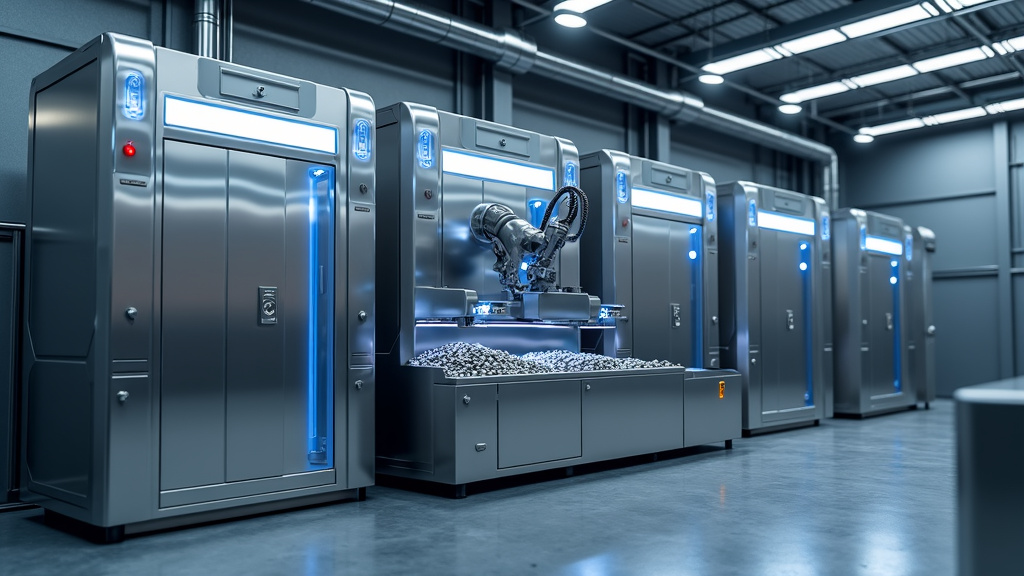
Innovative technologies and sustainable materials are transforming the landscape of heavy metal recycling containers. These advancements represent a significant shift in our approach to recycling.
Smart containers with IoT sensors are enhancing waste management by providing real-time data on fill levels and content. This technology optimizes collection routes, reducing carbon emissions and operational costs. Additionally, new composite materials make containers lighter yet more durable, extending their lifespan and recyclability.
Safety innovations include fire-resistant coatings and automatic suppression systems, essential for managing potentially hazardous heavy metal waste. Meanwhile, RFID tags and blockchain integration improve traceability, ensuring proper handling and recycling of materials throughout the supply chain.
These technological advances are crucial in creating a more circular economy for heavy metals. By enhancing the efficiency and effectiveness of the recycling process, we’re conserving valuable resources and reducing environmental impact.
To stay ahead in this rapidly evolving field, partnering with experienced recyclers who lead these innovations is essential. Contact Okon Recycling at 214-717-4083 for efficient heavy metal recycling solutions. Together, we can build a more sustainable future, one container at a time.
